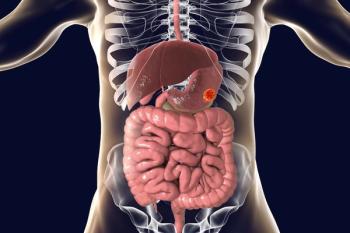
Multicancer Early Detection Test Showed Clinical Benefit, Minimal Distress
Patients with a cancer signal detected via multicancer early detection test demonstrated similar results to those who did not in the PATHFINDER cohort study.
A cancer signal detected during multicancer early detection testing led to small patient-reported effects that returned to baseline within 12 months, showing that multicancer early detection may correspond with clinical benefit and minimal patient distress, according to results from the PATHFINDER cohort study (NCT04241796) that were published in The Lancet.
Among patients who completed the Multidimensional Impact of Cancer Risk Assessment test, at results disclosure, the mean score was 28.4 (SD, 14.9) for the patients with a cancer signal detected result (n = 50) and 8.8 (SD, 7.2) for the patients with a no cancer signal detected result (n = 5864). Also, mean scores for general anxiety were increased in patients with true-positive and false-positive results at results disclosure.
Patient-Reported Outcomes Measurement Information System results showed a baseline score of 46.2 (SD, 6.5) in the true-positive group that increased to 48.4 (SD, 7.3), and in the false-positive group, scores increased from 47.3 (SD, 7.3) to 49.7 (SD, 7.7). At end of study, scores were 46.8 (SD, 8.0) in the true-positive group and 46.9 (SD, 8.1) in the false-positive group.
Additionally, 97.1% of patients (n = 5749 of 5920) were “satisfied,” “very satisfied,” or “extremely satisfied” with the multicancer early detection test; 97.2%of those with no cancer signal detected (n = 5698 of 5861) reported the same feedback, 92.0% with a true-positive test result (n = 23 of 25) reported the same feedback, and 82.4% with a false-positive test result (n = 28 of 34) reported the same feedback. Participants were likely or very likely to abide by health care providers’ future cancer screening recommendations in 95.6% of cases (n = 5182 of 5418).
“In this prospective, results-disclosure interventional study in a healthy, ambulatory adult population, [multicancer early detection] testing was associated with a high level of satisfaction and transient increases in anxiety in individuals with a cancer signal detected,” lead study author Donald L. Patrick, PhD, MSPH, Professor Emeritus of Health Systems and Population Health at the University of Washington, and coauthors wrote in the paper. “Additionally, the majority of study participants indicated an intention to adhere to future recommended cancer screening.”
A total of 6662 participants were enrolled in the study between December 12, 2019, and December 4, 2020, with 6621 participants having analyzable multicancer early detection results by end of study. Those who were 50 years or older with or without cancer risk and who were not undergoing diagnostic evaluation for malignancy at enrollment were eligible for participation in the study.
All participants received patient-reported outcome questionnaires before their blood was drawn, and multicancer early detection was done on the specimen. Those who received a cancer signal detected result underwent diagnostic evaluations highlighted by the predicted cancer signal origin. The status of each participant’s cancer was then assessed 12 months after the original blood draw for all participants.
Exclusion criteria include a personal history of invasive or hematologic malignancy within 3 years of the expected enrollment date, definitive treatment for invasive or hematologic malignancy, and inability to comply with protocol procedures.2
The mean age of patients was 63.0 years, 57.3% of patients were aged 50 to 64 years, 63.5% were female, 91.7% were non-Hispanic White, 24.5% had a history of cancer, 33.7% had a history of smoking, and 6.4% had a genetic predisposition to cancer.
The trial’s primary end points were investigating how much time was required to reach diagnostic resolution after a cancer signal was detected by multicancer early detection testing and assessing the extent of testing pursued. Secondary end points include patient-reported outcome assessments and perceptions of the multicancer early detection test and assessing the effect of the detection test.
Overall, 1.4% (n = 92) of participants had a cancer signal detected, of which 38% were true-positive results and led to a confirmed cancer diagnosis and 61% were false-positive results and led to no diagnosis.
References
- Nadauld L, McDonnell CH 3rd, Dilaveri CA, et al. Psychosocial impact associated with a multicancer early detection test (PATHFINDER): a prospective, multicentre, cohort study. Lancet Oncol. 2025;26(2):165-174. doi:10.1016/S1470-2045(24)00645-4
- Assessment of the implementation of an investigational multi-cancer early detection test into clinical practice. ClinicalTrials.gov. Updated October 25, 2022. Accessed April 7, 2025. https://tinyurl.com/58me9u7p
Newsletter
Stay up to date on recent advances in the multidisciplinary approach to cancer.

















































































